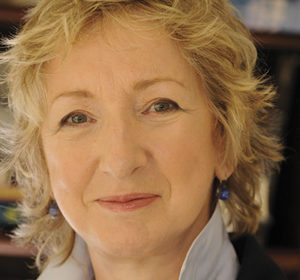Niall O’Dowd first introduced to me the idea that it was time for peace in Northern Ireland. I was living in San Francisco at the time and working for The Irishman (a newspaper Niall had founded). Frankly, I was doubtful. I had gone to the demonstrations outside the British Consulate during that terrible spring and summer of 1981. Bobby Sands, who had begun his hunger strike in March, died in May, and from then through September he was followed in death by nine others.
I really thought that there was so much pain and bitterness that people would never find a way forward.
Yet, when Niall sat down to draw up a prospectus for a new magazine in March 1985, he wrote “[Irish America] will have a powerful role to play in ensuring that Irish-American opinion on major issues, such as the North of Ireland, is put across in a reasoned, intelligently argued fashion. We expect that the magazine will have a crucial role to play in establishing and shaping the new Irish-American consciousness and that it will have a major impact in the U.S. and Ireland in terms of making that consciousness known.”
There are so many different elements to the peace process. As Tom Moran our Irish-American of the Year has said, “the reality is that people whose lives are on the line deserve the credit for things that have gotten done.” But the Irish-American dimension has been a key element too. And in this issue we salute many of those involved in helping to lay the groundwork for the new power-sharing government Northern Ireland now enjoys. (You won’t find Niall O’Dowd’s name among them – nepotism prevents it – but he played his part.)
I have lived in America long enough now that I feel that I am of two countries – Ireland and America; they both come together nicely in that special place called Irish America – a place where I have witnessed great things. I’ve been privy not just to the protest marches but to the Irish-American Forum (Sept. 1992) where candidate Bill Clinton first promised a U.S. visa for Gerry Adams. I was at the Waldorf-Astoria to witness Adams’s first visit to New York (Feb. 1994), and at the White House Economic Conference (May 1995) which brought together leaders and community people from all of Ireland. I was there, too, in Derry and Belfast when President Clinton made his first visit to Northern Ireland (Nov. 1995). And throughout the peace process, I cannot count the number of times that I visited the offices of Mutual of America where Bill Flynn and Tom Moran hosted politicians and community leaders from all sides of the Northern divide.
More recently, and with the feeling that a long journey had finally come to an end and the promised land was within reach, I attended two events in New York City in honor of the first joint visit to the U.S. by Ian Paisley and Martin McGuinness, Northern Ireland’s First Minister and Deputy First Minister. As I wondered at the force that had brought it about, I was reminded of an interview I did years ago with then newly elected president of Ireland Mary Robinson – the first politician, in my opinion, to truly understand the Irish diaspora and to “put a light in the window” for us. She talked about her year at Harvard – how she had been infused with the “gung-ho” spirit of Americans. It was that same gung-ho spirit that helped bring about the peace process – that, and the belief that peace was possible.
This is a country of great people – it’s easy to forget that sometimes. But a look at the wonderful profiles of those on this year’s Top 100 list is proof positive. America is the stuff that dreams are made of – out of grit and hard work and sometimes out of the belief that the impossible just takes a little longer. And so, in this election year as the focus is more often on what’s wrong with America than what’s right, let us think of the caliber of the people who built this country, and of the American spirit and gung-ho attitude that can move mountains. It helped move 800 years of intransigence in Northern Ireland. It can fix whatever’s not right here at home.
Mortas Cine.


Leave a Reply